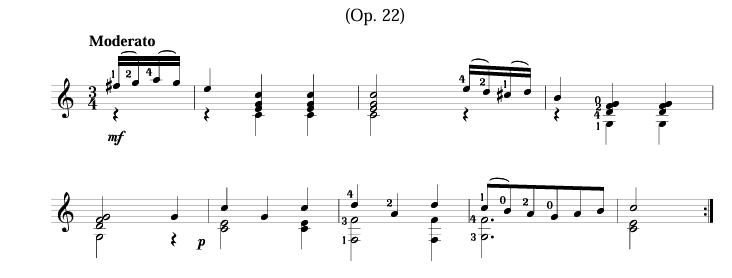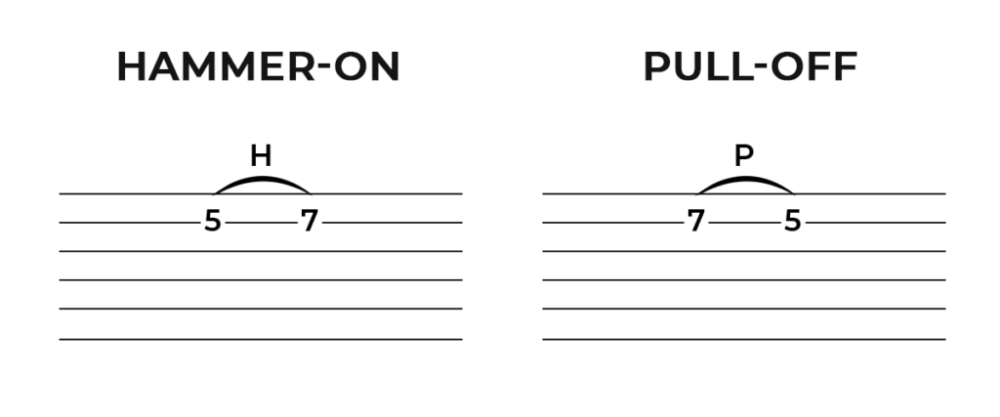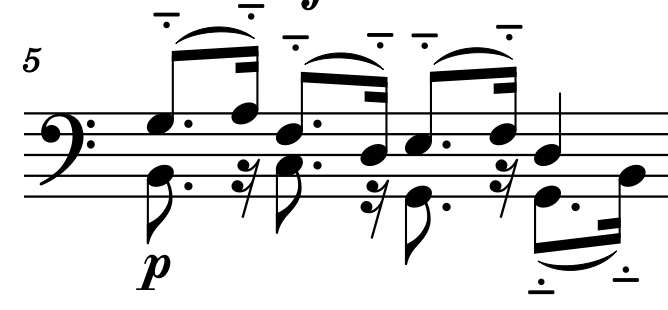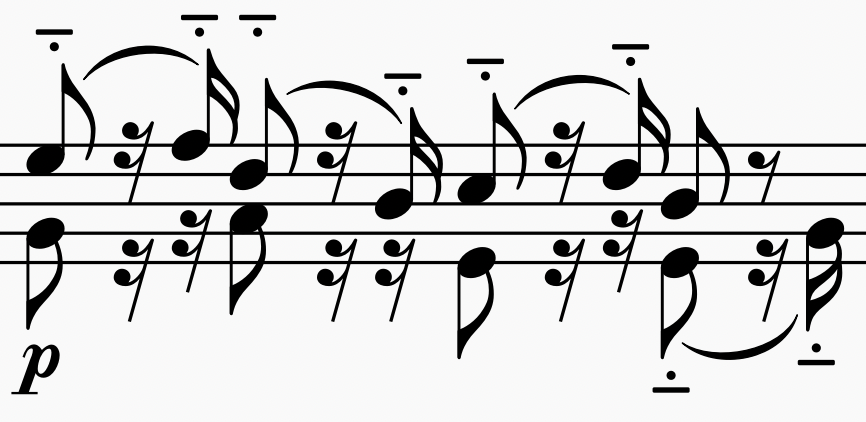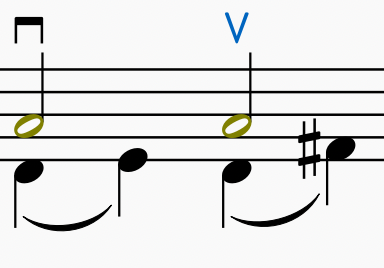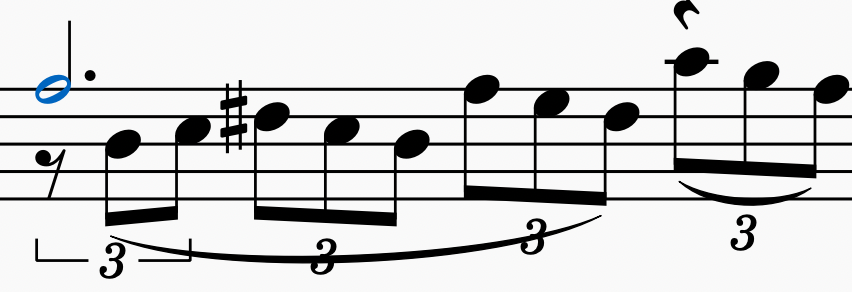Leaderboard
Popular Content
Showing content with the highest reputation on 12/30/2023 in all areas
-
Looking for feedback on form, development, and overall cohesiveness. The labeling of various modes and other features is due to this being a project in Music Theory class at my university.1 point
-
Here is the 2nd movement of a trio sonata for Organ that I am currently working on! It is more or less complete, there are some things I may change about it. Any feedback is welcomed!1 point
-
I don't write a lot of VGM but would definitely be interested in getting more into it - here is my take on that idea. I bitcrushed it to give it that retro feel (think a Nintendo DS soundtrack)1 point
-
Very solenne theme here, Tyler. I just have a question: Why is C clef here? The piece flows, I am not sure where, but this is a 2nd movement of an Organ Sonata so I think I'll wait for the complete piece to be done. In any case, I enjoyed it. I myself am afraid of writing for organ due to the enormous amount of registers you have (many more than for accordion) at your disposal. Thank you for sharing. Kind regards, Daniel–Ømicrón.1 point
-
Hi again Tom, Merry Christmas! Just checking you realised the album cover has a typo ("Witten" instead of "Written"). The first piece in the album is cool and catchy, but it sounds a bit repetitive to me after a while and in my opinion that makes it lose a bit of its appeal. Apart from that, it has a strange abrupt comeback at ~1:55 and some also strange delay at ~2:33. It also sounds VERY saturated at around the fourth minute. In any case, I enjoyed most of it. The second piece sounds familiar to me. Have you uploaded it here before? Again, it begins very nicely (but saturated, at least on my end). However, the bass phrase is repeated around one minute straight and then the very same melody opens a different phrase that turns out to be very, very similar to the prior baseline and which unfortunately sounds with A LOT of saturation too. From minute 9 to minute 10, the very same baseline repeats until it abruptly ends. That kind of end works to me here I would say, but I'm not sure if it's because I was kind of tired of listening to the same baseline for two minutes in total. I liked the first theme more. The choice of the organ on the third theme sounds not so good to me. It seems to be detuned and it gets rapidly eaten by the drums. Once again, the same structure repeats (I guess it goes with the type of music you're trying to produce, right?). A kind of catchy phrase repeated ad infinitum. Contrary to the other two pieces, I think this one was not artificially overextended. The fourth theme has the best beginning though I would say that the high frequencies present in the drums contribute to make a racket more than to enhance this theme. I would say that despite its beginning, this theme is the most overextended one I've listened to in the album. Fifth theme: I am not sure if it's just on my end but I sometimes hear the drums misaligned with the melody line. Not much to comment here as I don't want to be too dense, and repeating myself would not contribute to this goal. This theme sounds less saturated than others, I must say. I liked this baseline more than other prior ones. It doesn't give me that tiredness feeling. Sixth theme: I think this is my favourite one. It's much more balanced and contrasts so good with other themes you made. Still, it sins of overextending in my opinion and has some delays (and sudden acceleratos) or misaligned moments. I think this was your album's best theme. Kind regards, Daniel–Ømicrón.1 point
-
Thanks @Omicronrg9 for your very detailed and thorough review! Did you forget about variation XXV? You go from XXIV straight to XXVI so I'm assuming your comments for XXVI to be meant for the Rondo variation? I am glad you didn't find much in the piece to be objectionable, besides as you mentioned, the end of course. I think I had previously written a 10 minute long set of variations for Wind Trio in Gb, in which I also ended the piece with a 5/8 "Lilt" variation that accelerated at the end. I guess I just defaulted to the same approach in these variations since I liked how that worked before. And I wanted to avoid writing an ending that dragged on and on with the typical triumphant alternations between tonic and dominant. I wanted the whole piece and the ending especially to be succinct. And, since the piece ends on a subdominant major 9th with a #11 I really liked how that chord sounded in context in terms of the quality of its finality. I think, for me it was a better choice than ending on the tonic by preceding it with the aforementioned triumphant alternations between tonic and dominant which so many classical-styled works end with (which I don't like). That's my reasoning behind that. Yes - exactly! I wanted people to want to listen to it over and over again. And I also modeled these variations on Ernst von Dohnanyi's Variations on a Nursery Rhyme for Piano and Orchestra and he does many things in that piece which I wanted to avoid. There is a long and overblown introduction which I guess he added later as a kind of way of making the entrance of the piano playing the nursery rhyme ("Twinkle, Twinkle Little Star") more humorous, but I didn't like it, so I in my variations I just went straight into the theme played by piano without any kind of introduction. I also felt he dragged the piece on too long by including a passacaglia, so I wanted to keep each individual variation in my piece brief also for that reason. Thanks, Daniel! And I too hope you have a Happy New Year and that you share more of your compositions and reviews with us! Peter1 point
-
In Guitar playing, there are two ways to play slurs; Hammer-ons and pull-offs. You can also play slurred notes using slides, but that would be using glissando which would probably not come Hammer-ons are, as the name suggests, when you sharply bring a fretting-hand finger down on to the fingerboard behind a fret, causing a note to sound, you "hammer on" to the fret. Pull-offs are when you pluck or "pull" the finger that is grasping the sounding part of a string off the fretboard. They are the opposite of the hammer-on. Examples: Pull-offs; The opening bars of Francisco Tárrega's mazurka "Adelita": Hammer-ons: (contains both techniques but hammer-ons are more prominent): The opening of the theme in my own "Variations on an Old Kiwi Christmas Song": Both Techniques; The opening of Fernando Sor's Minuet No.1 from 2 Themes and 12 Minuets Op.22: Though most slurs in guitar music imply whether they are to played as a hammer-on or pull-off, in more modern guitar notation ( the way the slur is to be played is usually directly stated:1 point
-
A share for bowed strings here. First, some comments regarding slurs and bowings: 1. slur indicators for strings should be equivalent of bowing directions 2. string players will most likely adapt their own bowings regardless of what you composed I've just re-realised part of my old work that is quite clear to have Beethoven/Schubert influence, the cello solo sonata in C major. Maybe if I have time and effort I'll eventually re-realise the whole thing on a workable score. I will highlight parts where slur/bowing is of interest. --- Bar 5: this means a bow per beat, with a break in between the slurred notes. the effect is similar even if I don't add the staccato mark (below is a kind of realisation) --- Bar 24: slur crossing strings ("bariolage"), in this case the A and D strings. note that in this instance there are hidden voicings (realisation of a possible intended voicing below) --- Bar 34: notice the low D "slur" with tenuto marks. similar to the first scenario, both Ds are meant to be heard separately (see realisation below) --- Bar 36: notice the apparent absurdity of holding a full note on the A string and separate bowing on the D string. In reality: --- Bars 43-46: similarly, (realisation) alternatively --- Bar 69: upbow staccato. imo this really is just a performance visual effect that is more difficult that the separate bows counterpart but can just sound very similar P.S. you guys are lucky I have not quoted a single instance of tenor clef music here... EDIT: added recording. I haven't touched my instrument lately so it's really rusty, but here we go. I also have the musescore-mp3 (labelled MS) version if my playing is too "rustic" for you... can you believe I wrote this nearly 10 years ago lol EDIT2: bonus points (not really) if you can find where I "cheated" with bowings and why I did that EDIT3: feel free to disagree with me, I'm no expert by a long shot EDIT4: use the new improved recording please I guess1 point
-
Well it seems we here agree your old name is as harmless as your new one. It's your piece after all, and only you as the composer should have power to change it at will. You did, and we respect it! All in all, we are here for the content so belated welcome to the forums and let's dive into it! The left hand is kind of repetitive, but that's kind of expected from a piece that wants to emulate some folk of any certain region or country. Generally the accompaniment doesn't get real messy, and you have some virtuosity on the melody in the form of solos (at least in folk culture near me). I may agree the piece is too long, and as for your concern, you can perfectly do an "ossia" so it's up to the performer or you can make 2 versions or variations of the same theme or concept. For example, Schubert did 2 versions (one left unfinished, sadly) of an Adagio in G major (D. 178): Regarding the score, I think all those stacattos + tenutos could be replaced by a slur with stacatto in each note without loss of meaningfulness. (@chopin) and that the piece itself may get much more alive with a little more attention on dynamics. That said, I had a great time listening to your dance, it's very energetic at times and it sure keeps you engaged during the first minutes. Kind regards, Daniel–Ømicrón.1 point
-
Here we go. From the theme only you know the sound will be above average. BTW, Peter, I think the score would be easier to follow if you also provided parts (some of them at least). Scrolling a single page after less than 10-15 seconds is unavoidable when there are so many instruments involved, but for a more close and in-depth analysis I would really have preferred to go part by part in some cases. • I: Very spot-on chromatic color. You don't go too far from the original material (yet?). I like the approach that I think you're taking. (You did) • II: This one is more intense, but not denser. Really nice job with this second variation. The dissonances are somehow not strong enough to provoke a feeling of tension, but to bring attention and carry some kind of "background flow". • III: Here stuff begins to get really original. This var. feels so cheerful! • IV: The fact that you make no random pauses (at least for now, up to variation VII) makes it easier to stay I believe (basically I agree with what Quinn said). Kinda difficult piano part! • V: III, IV, V and VI get along very well in my opinion. The transition from one to another is almost not noticeable, specially in case of III, IV and V. • VI: I like how the piccolo (and wooden winds up to some degree?) is kind of the leading voice. The Q&A structure works pretty nicely in this movement; another great job and one of my favourite variations. • VII: here the music seems to be refusing to end, it feels like a great "connection" between VI and VIII. • VIII: really original, though I think this is the 3rd-4th movement with a certain pattern in common. • IX: stuff gets really interesting here, less than in the next movement but I like how the various voices get entwined seamlessly. • X: These harmonic twists here are great. Again, it feels like with each variation, an entirely new piece is arising by deviating slowly but steadily from the original material. This is my favourite variation. • XI: This one felt a bit short to me (but it suddenly made sense). Yet another great variation nonetheless. • XII: Is it me or variations are getting shorter? I barely noticed differences between XII and XIII and it was too late when I realised I was in XIV. Your transitions vary from almost unnoticeable to pleasantly contrasting. This is clearly a piece in which you have put a lot of effort, and in all honesty I wouldn't have expected less! • XII-XVI: I would say these form a subgroup inside your set: flutes and the piccolo keep dancing around the theme, deviating longer from the OG material, before coming back —more and more briefly— to the theme. • XVII-XVIII: another smaller subgroup I'd say. The chromatic scales, this time on the violas (on XVII) & piano (XVIII), sound delicious and more subtle than in II. • XIX-XX: The music flows faster than what I can process, making me go backwards a lot to fully listen the variation subset. This is great music to get up, many thanks for sharing it Peter. • XXI-XXIII: Just another 💯 transition from the lightness of the prior subgroup (which is BTW heavier than the XVII-XVIII subgroup, and that one in time lighter than the XII-XVI which passed like a breeze... It seems that consciously or not, you kind of ordered these subgroups!) • XXIV: noticeably longer than the rest (feels like more than one variation to me), which may even make sense if this was treated as a piano concerto(?). Not sure, but anyway, I liked how you implemented it and where. It felt like a deserved and well placed rest for the orchestra. XXV makes the comeback much more smooth! Piano still holds the main voice, but the orchestra keeps pushing more and more! I love it. • XXVI: A daring one, I would say. Its development is so cool, the combo of measure indications works really good. Up to now, literally nothing made me doubt, I just followed the piece without a single thought of the kind "well this works but I would have preferred XYZ". It just didn't happen, it's so well constructed and well-thought that my brain didn't question it. Until now, at the very end of this great work. I suppose this is intentional: imagine you were recording this set of variations and that you remember that the place where you're doing that is closing very very soon, and thus that the janitor is on his way to open the door and interrupt you "Hey Peter, we're closing". Preventing that, you cut half a page and accelerate stuff, but it's too late he's approaching the door so you end abruptly! This is kind of what I felt here. Not sure if this was the best or worst way to end this absolute impressive work: personally I did not like it and I left the theatre unsatisfied, wanting some more variations to listen to. I've been listening to this continuously like an hour and a half already, and this probably just increased my desire for a "proportional ending". This is all subjective, though: one objective fact here is that this movement stroke me more than others because it was daring, and because I did not expect it to end like this. My perspective of such ending may change over time, but the fact it gave me a really powerful impression will stay: perhaps this was, after all, the best way to end the piece. It must not be a bad ending, nor a bad piece, if it leaves you asking for more! Belated merry Christmas 🎄, Peter. I do hope you to stay around for many, many more years and bring us more of your HQ content. Kind regards!!1 point

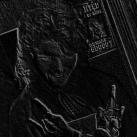


.thumb.png.8b5b433a341551e913a34392660bc95b.png)

